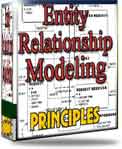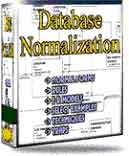 |
||
| |
Database application architecture - High performance softwareDatabase application architecture: How does a computer operate?Actually, much relies on the application architechture. In the real old days, computers worked with dumb terminals - that is, the screens were just screens; everything happened at the central site. IBM (tm) was big; you filled out a form of some sort, then you transmitted it to a central computer. If you did something wrong, you got a message back: Error in line 2 (out of 30).Why couldn't you get that message when you were at line 2? Because you had NO computing power on your desk: all programs were running on the central computer. Today it is another situation: Your application architecture delivers more computing power on your desk than these old mainframes could ever dream of. And still your system is slow, making you wait forever? Most likely, it's because of the database application architechture. When PC's came into play, the IT professionals soon found out that much of the work could be done on the client. The client is your PC, hooked up to a server (a computer far away). So the application architecture changed radically: The software engineers placed a lot of logic on the PC's to avoid putting a too heavy workload on the server(s). That sounds right, yes? The problem was: Now the network had so much to do, sending all the traffic to your PC, that the network became the bottleneck. Imagine you want to see all information on a specific customer: the server sends you all customers and tells your PC: You figure out for yourself which customer. That is exactly what happened in client-server computing. The result was very slow performance because of the enormous traffic over the network. Today, we have a new appproach to this: We split the application architecture logic in different layers, and we minimize traffic. This is called multi-layered software; many people call it three-tier: The database server does its job, which is to find data, the application server acts as a middle man; getting data after receiving requests, and the client (your PC) does only functional computing; that is, allowing you to act upon, and manipulate, the data you get from the application server. (Bear in mind that this section of the website is relatively new; There will be other topics added here in the future). Microsoft SQL Server Training keynotes
Return
to Database Design home |
Exclusive interviews with:
Free eBookSubscribe to my newsletter and get my ebook on Entity Relationship Modeling Principles as a free gift: What visitors say...
"I just stumbled accross your site looking for some normalization theory and I have to say it is fantastic.
Read more
Testimonials
I have been in the database field for 10+ years and I have never before come across such a useful site. Thank you for taking the time to put this site together." Mike, USA |
Theory & Practice DB Normalization Analysis Phase Database Keys DB Glossary Appl.Architecture Oracle DBA MySQL DBA SQL Server DBA Install Oracle Install SQL Server Proj.Management Oracle Constraint Programming Tips Database Normalization eBook: |
||
|
Copyright © www.databasedesign-resource.com /
All rights reserved. All information contained on this website is for informational purposes only. Disclaimer: www.databasedesign-resource.com does not warrant any company, product, service or any content contained herein. Return to top
The name Oracle is a trademark of Oracle Corporation. |
||